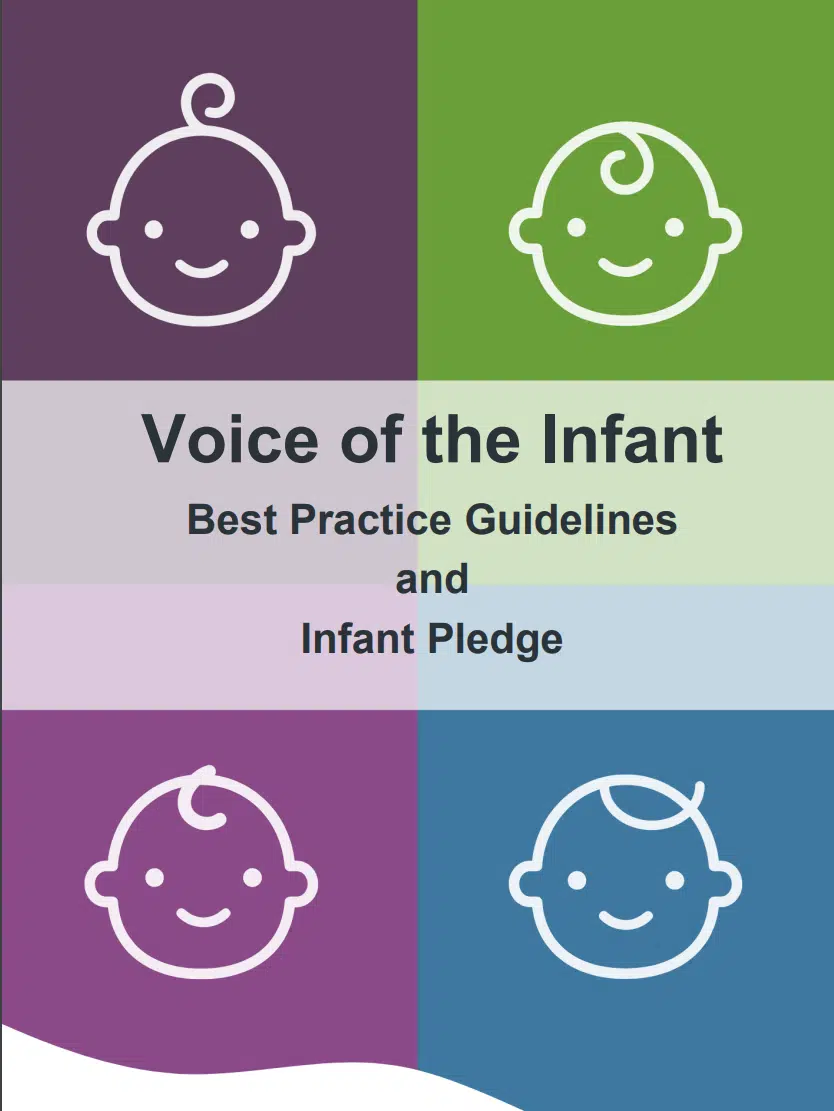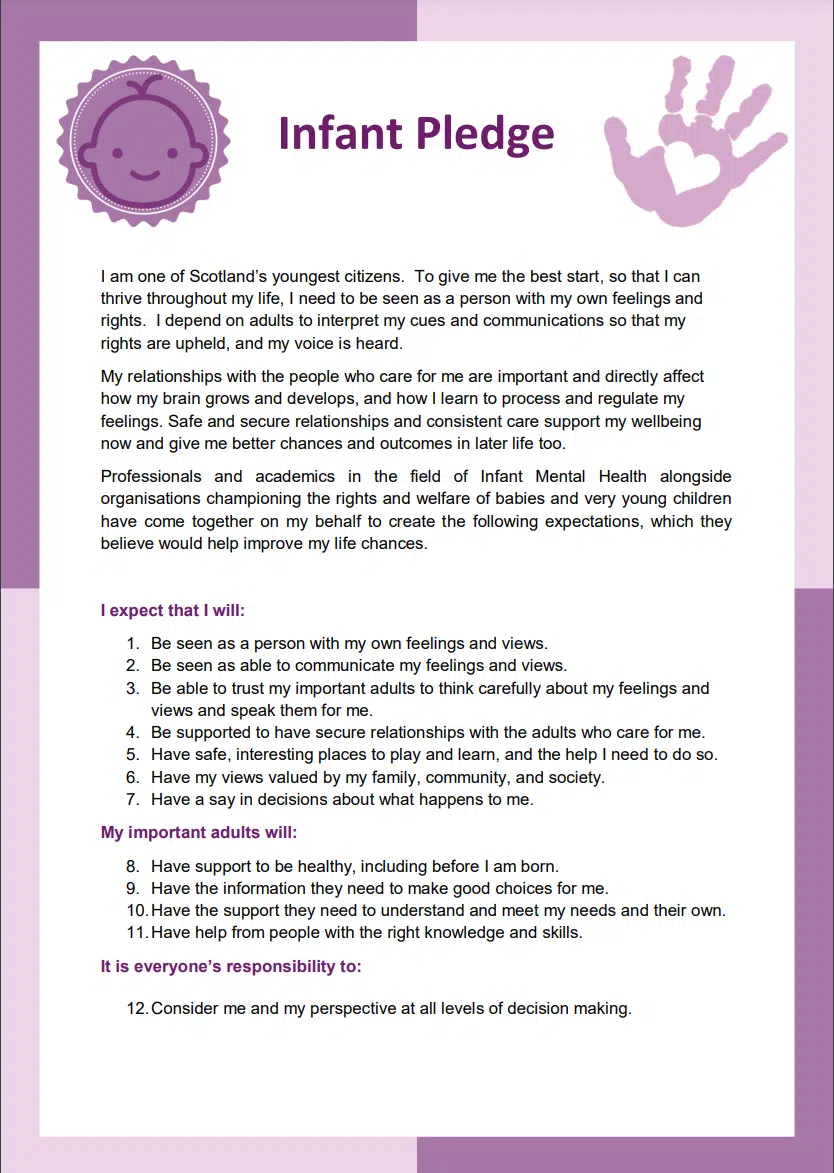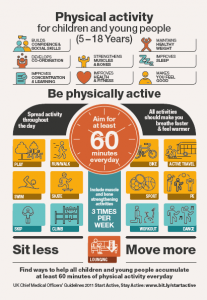Yesterday, the Scottish Government launched their Infant Best Practice Guidelines which includes a national ‘Infant pledge’.

Hilda Beauchamp, iHV Perinatal and Infant Mental Health Lead, welcomed this important policy commitment to infants stating:
“The iHV is delighted to support the launch of the Scottish Government’s Voice of the Infant best practice guidelines and infant pledge. Co-produced as part of the Perinatal and Infant Mental Health Programme board, the new Scottish Model of Infant Participation places babies and very young children ‘front and centre’ to ensure that they are always in focus and their views are shared and acted on.
“The Model is depicted in the colours of the Scottish landscape, representing heather, forest, hills and sea but, more importantly, drawing the attention to four key domains for all who care for and work with infants. These are Space and Voice, relating to the infant’s right to express their views, Audience and Influence, relating to their right to have their views given due weight.
“These important documents add weight to the already very enabling policy context for infants in Scotland, building on the Getting It Right for Every Child (GIRFEC) approach, the UNCRC (Incorporation)(Scotland) Bill, The Promise, Child Poverty Delivery Plans and Covid Recovery Strategy, and will contribute to the national ambition for every baby, child and young person to be loved, safe, respected and realise their full potential.”
There has been a well-documented and persistent ‘Baby Blindspot’ in national policy. This pledge represents an important step in fully recognising the needs of our youngest citizens in Scotland. We join with others in calling for similar initiatives in all UK nations.
The Pledge is written in simple language and from the baby’s perspective. It is available as a one page sheet that can be printed and put up as a poster in places welcoming babies.
Infant Pledge
I am one of Scotland’s youngest citizens. To give me the best start, so that I can thrive throughout my life, I need to be seen as a person with my own feelings and rights. I depend on adults to interpret my cues and communications so that my rights are upheld, and my voice is heard.
My relationships with the people who care for me are important and directly affect how my brain grows and develops, and how I learn to process and regulate my feelings. Safe and secure relationships and consistent care support my wellbeing now and give me better chances and outcomes in later life too.
Professionals and academics in the field of Infant Mental Health alongside organisations championing the rights and welfare of babies and very young children have come together on my behalf to create the following expectations, which they believe would help improve my life chances.
I expect that I will:
- Be seen as a person with my own feelings and views.
- Be seen as able to communicate my feelings and views.
- Be able to trust my important adults to think carefully about my feelings and views and speak them for me.
- Be supported to have secure relationships with the adults who care for me.
- Have safe, interesting places to play and learn, and the help I need to do so.
- Have my views valued by my family, community, and society.
- Have a say in decisions about what happens to me.
My important adults will:
- Have support to be healthy, including before I am born.
- Have the information they need to make good choices for me.
- Have the support they need to understand and meet my needs and their own.
- Have help from people with the right knowledge and skills.
It is everyone’s responsibility to:
- Consider me and my perspective at all levels of decision making.





